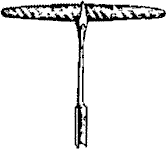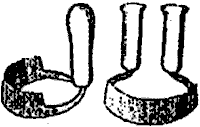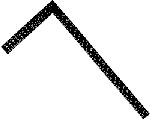Using authentic tools
Visitors to Colonial Williamsburg are as intrigued by 18th-century tools as they are by 18th-century methods of building. Take a look at some of the more unusual tools used by colonial carpenters.
  
|

Augers
|
  
|

|
  
|
| Chisels |
  
|
|
Compasses and calipers |
  
|

Drawknives and spokeshaves |
  
|
|
Hammers |
  
|

Planes A plane is a tool for shaping or smoothing a wood surface. Colonial carpenters used a variety of planes, including the coopers' croze shown here, which was used to cut the groove in barrel staves for the barrel head fit. |
  
|
|
Saws |
  
|
 Squares and bevels |
  
|

 Chisels
and gouges are among the most ancient
tools used to shape wood, and their
basic form has remained the same
for thousands of years. Carving
chisels and gouges were
made in many different shapes and
sizes for decorative carving.
Chisels
and gouges are among the most ancient
tools used to shape wood, and their
basic form has remained the same
for thousands of years. Carving
chisels and gouges were
made in many different shapes and
sizes for decorative carving.  Compasses and calipers were often used to measure and fit work in the 18th
century, rather than using a measurement of inches or feet. The Trammel
points compass shown here had two or more heads that could be positioned
along a bar. It would have been used to lay out large arcs and circles.
Compasses and calipers were often used to measure and fit work in the 18th
century, rather than using a measurement of inches or feet. The Trammel
points compass shown here had two or more heads that could be positioned
along a bar. It would have been used to lay out large arcs and circles.